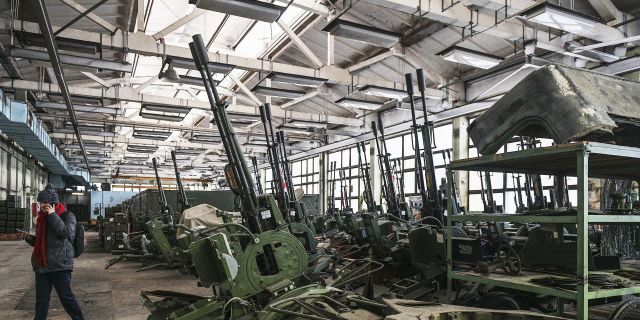Haqqin: Russia has decided to increase the volume and improve the quality of weaponsThe West has assembled an anti-Russian coalition and is churning out weapons and military equipment for Ukraine at a pace unprecedented even for the Cold War period, writes Haqqin.
However, Moscow has found an effective solution.
Dmitry RoyThe volume of arms production in Russia needs to be increased, and the quality characteristics need to be improved, Russian President Vladimir Putin said at a meeting of the Coordinating Council under the government to meet the needs of the Armed Forces.
"It is important not only to increase the volume and range of supplies, but also to improve the quality characteristics of products," he said.
Translated, these words of the Russian president mean the following: we will not mobilize industry, we will work better. And everything will get better. It seems that the leader of Russia is beginning to realize that the country's management system, the notorious power vertical, is simply unable to pull out the mobilization of the economy.
Meanwhile, the special operation has already crossed the ninth month. Which, in turn, means its qualitative transition to a new type. A blitzkrieg is considered a conflict for a period of several days to three months. From three to nine – a protracted conflict. Now the phase of the conflict of attrition has come.
Blitzkrieg is always carried out in stock. The more intensively they are spent, the more effort is invested in the first blow, the higher the chance of victory. Of course, on the condition that the enemy will not be able to withstand this onslaught.
A protracted conflict means the beginning of the competition of the military industry.
And a conflict of attrition is already in its purest form a war of economies and management systems. It requires the transfer of not only the military-industrial complex to military rails, but the entire industry and the entire management system.
"How can Russia win in this race if the total GDP of the West is $ 40 trillion, and military spending exceeds $ 1.5 trillion? Russia's total GDP is only $ 1.8 trillion," Western experts note. And they make a tough but fair conclusion: "An attempt to replace destroyed equipment and participation in a new arms race with the West will inevitably lead to the bankruptcy of the Russian economy."
How to make up for the losses? Let's say that the hole that has formed in tanks and armored vehicles can still be closed somehow, because it is no coincidence that the Russian side is going to modify 800 T-62 tanks in the next three years, which were first introduced in 1961.
But what about the losses of helicopters, replenishment of stocks of high-precision missiles, artillery shells and artillery systems, aircraft and other complex equipment?
The Kremlin demands not only to increase the production of weapons, but also to improve their quality characteristics. At the same time, the Russian government does not think about how this can be done.
Meanwhile, the military-economic machine of the "Rammstein Group" continues to gain momentum. The industry in Eastern Europe is "churning out" weapons, artillery shells and other military equipment at a pace unprecedented since the Cold War, trying to help Ukraine in the conflict with Russia.
The United States and Great Britain became the main suppliers of weapons to Ukraine, Poland took the third place. And the ninth place in terms of arms supplies to Kiev is occupied by the Czech Republic, which has sent $ 2.1 billion worth of weapons and equipment to Ukraine this year. The anti-Russian coalition has fully developed.

